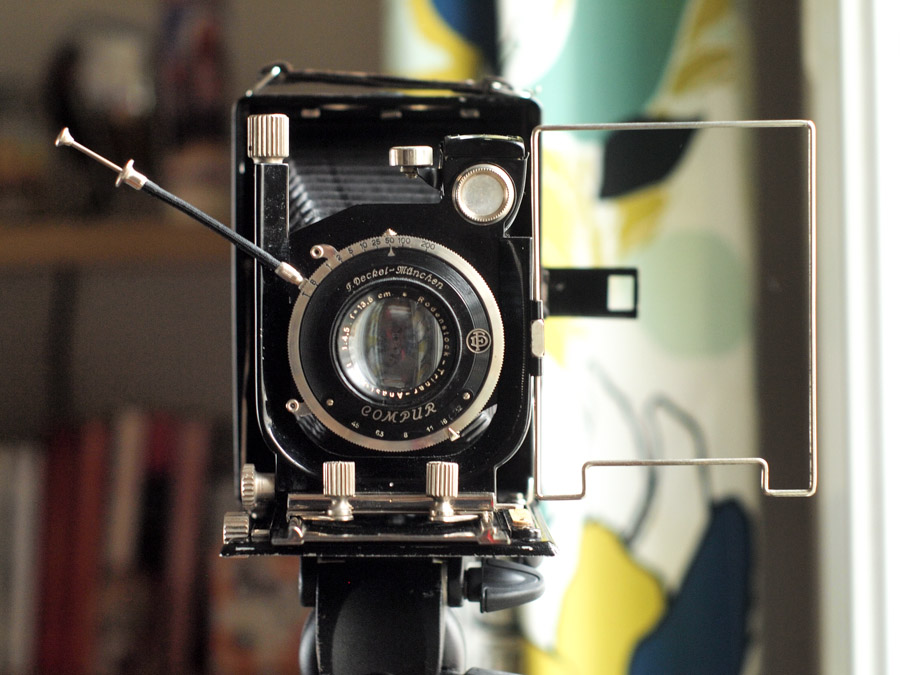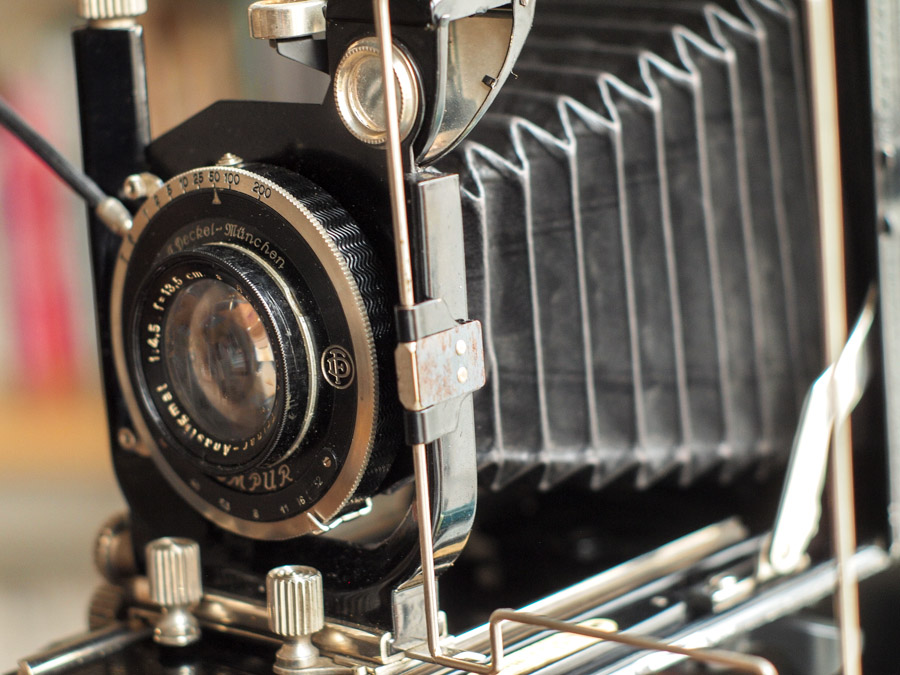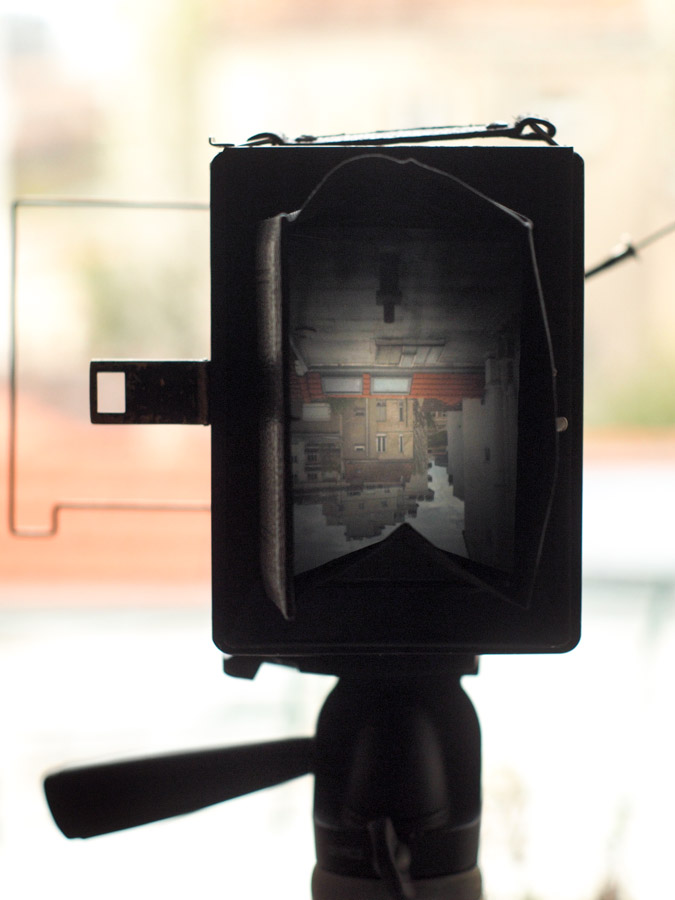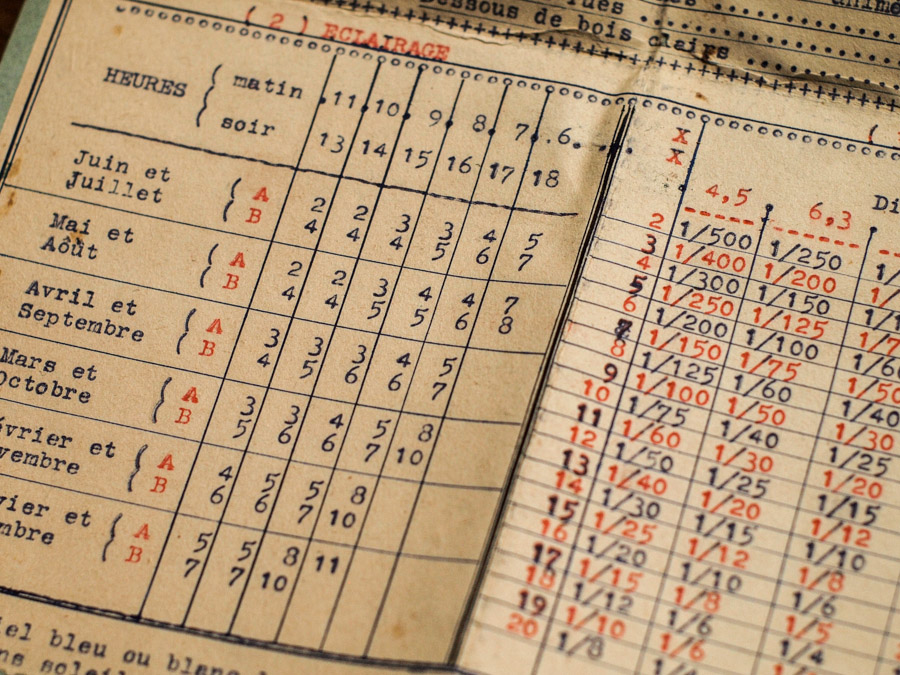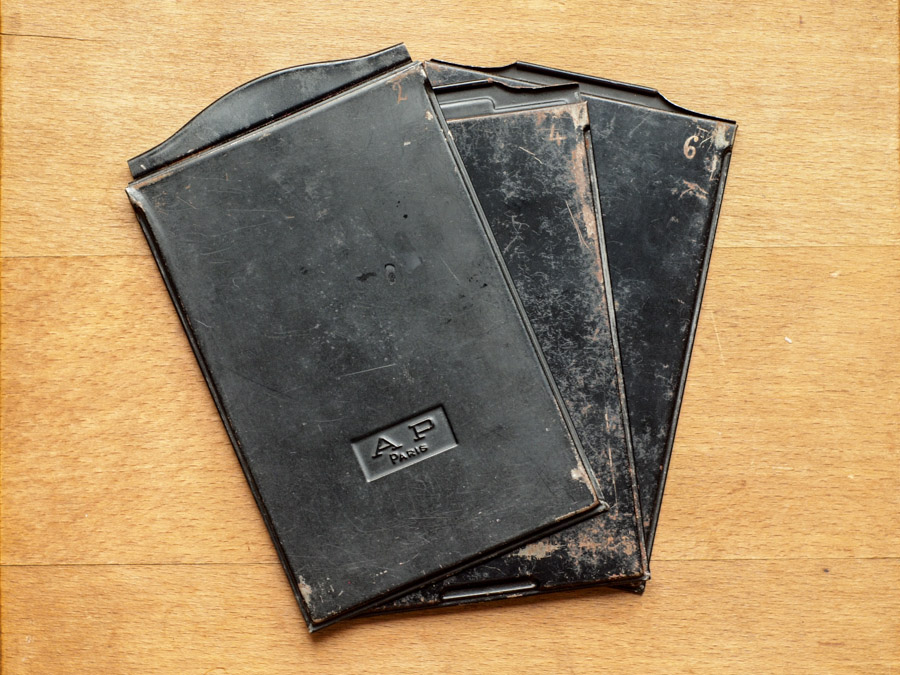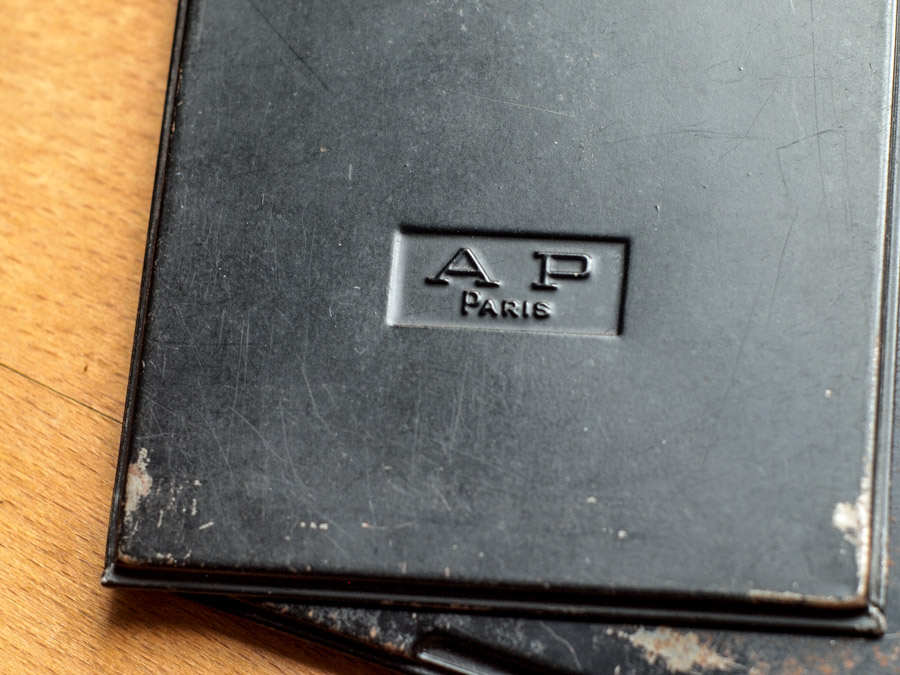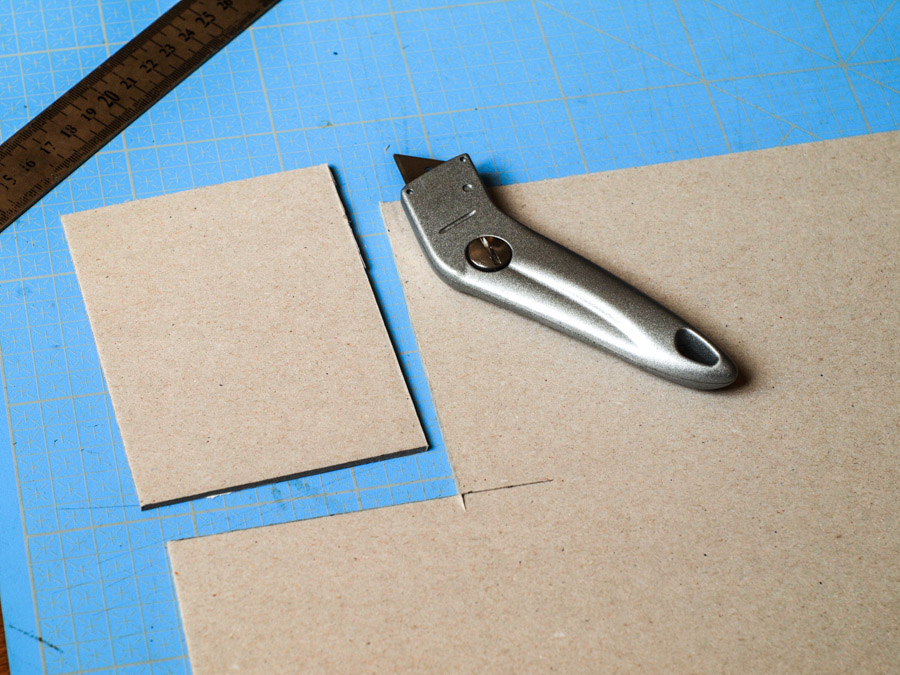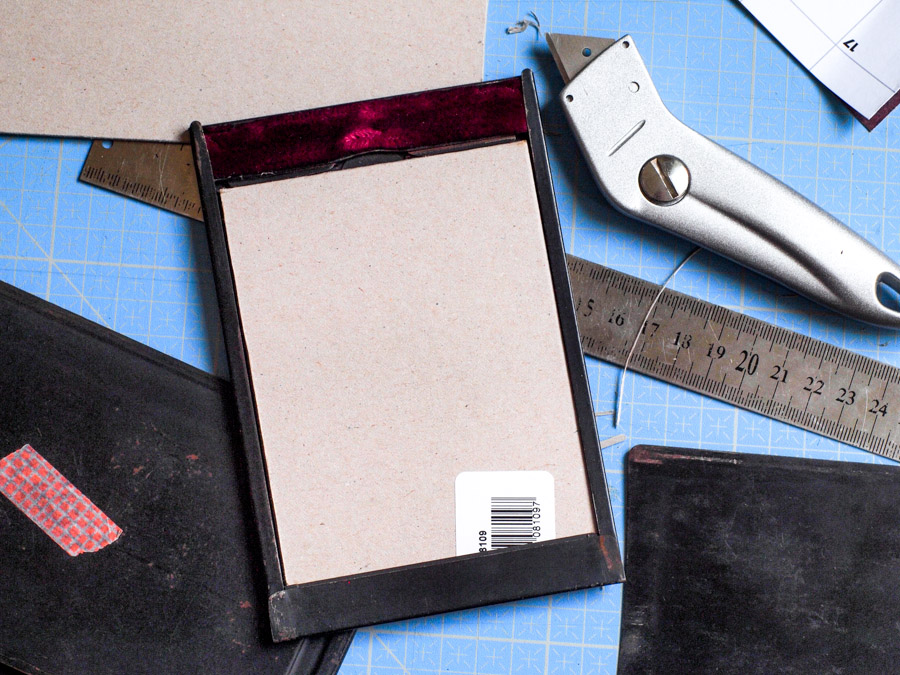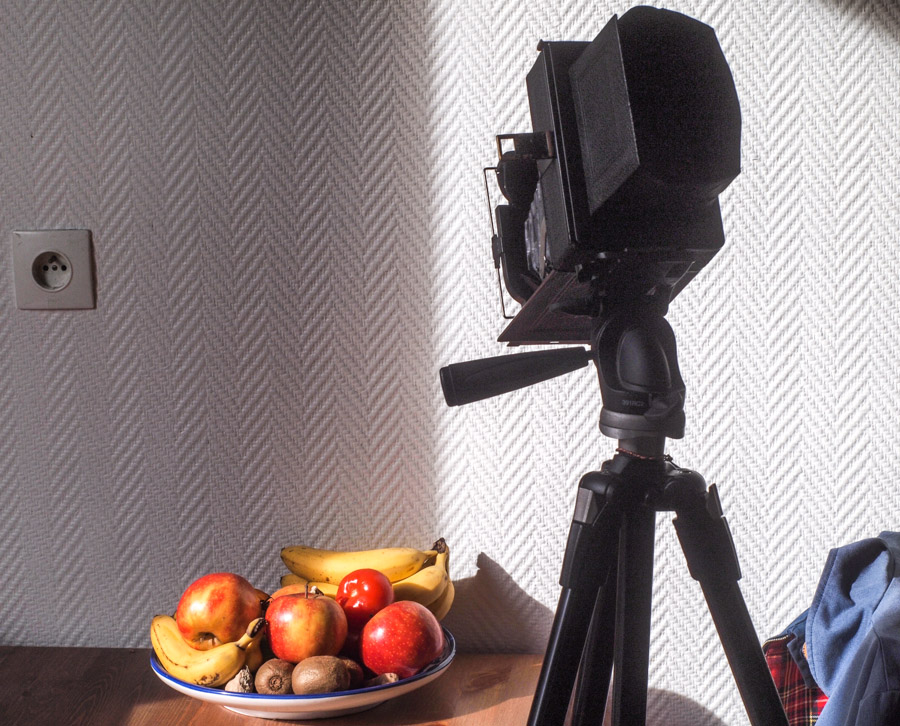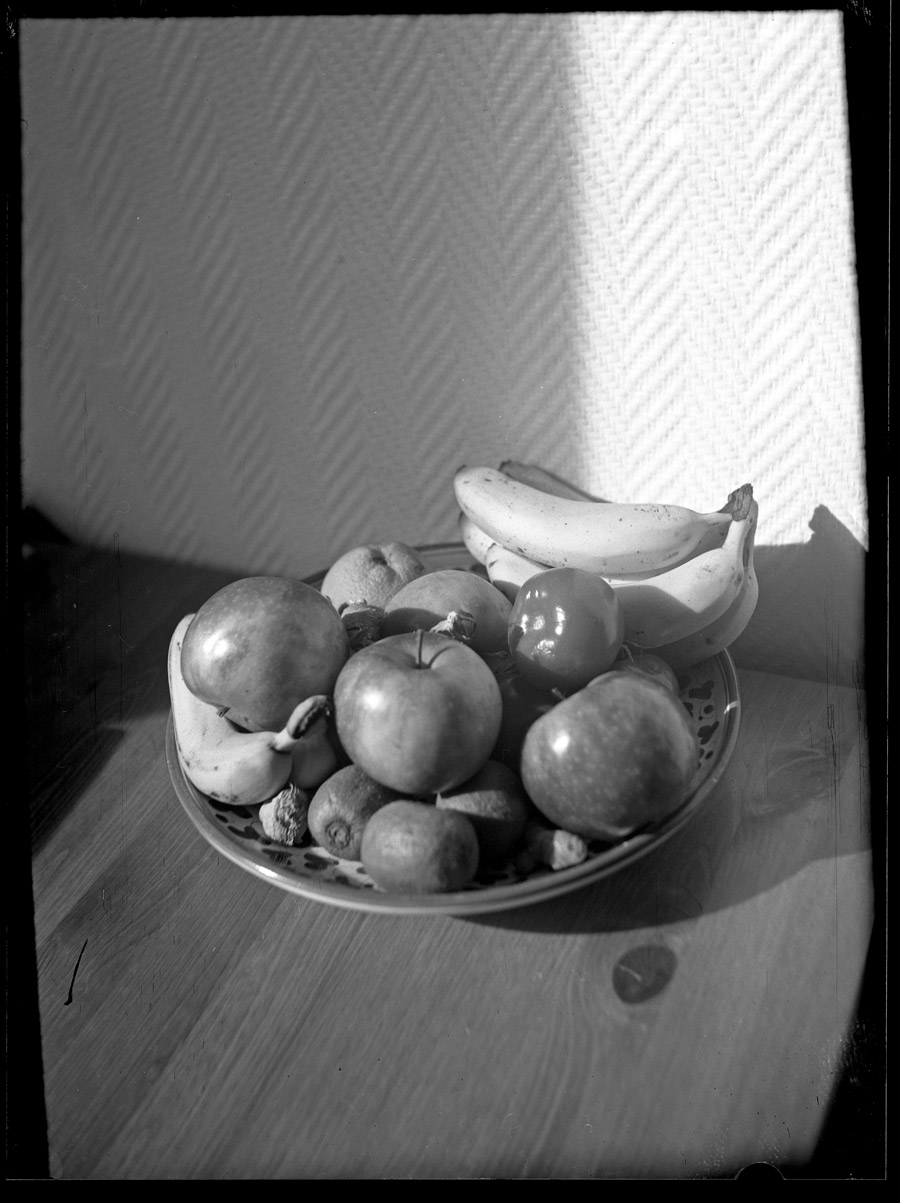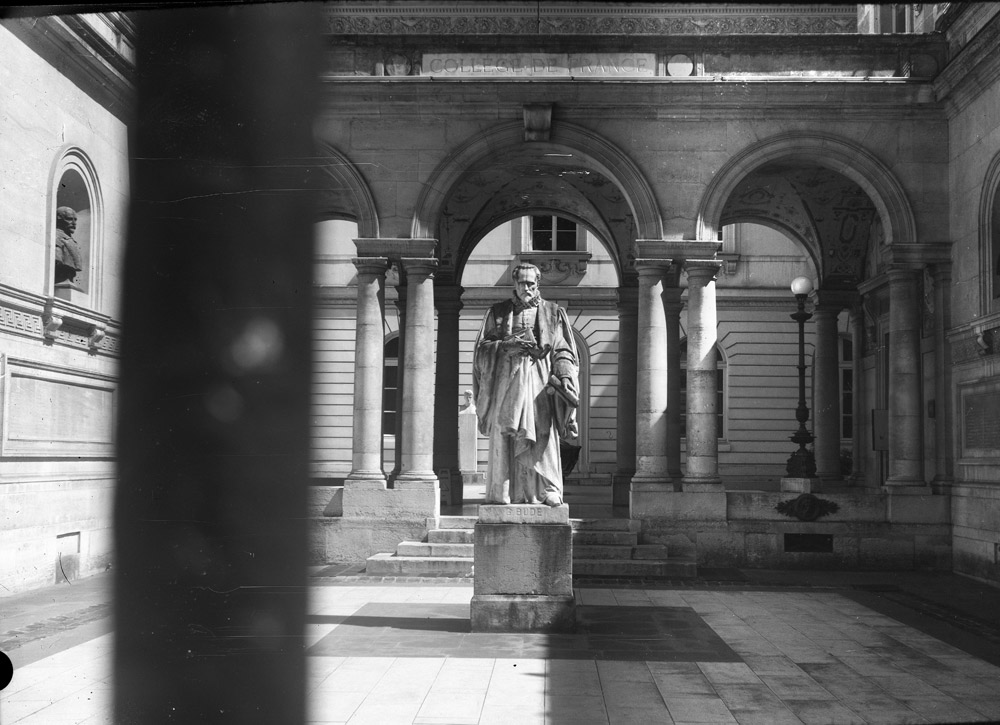For an upcoming project — Do not worry, I will keep you informed —, I acquired a view camera for forty euros on eBay. No brand, no logo. It comes with 6 glass-plates holders. That is all the seller’s description contained. When I unpacked it, I expected to discover, under the protection paper, a stack of springs, screws, attached to a torn bellows and a sad broken glass lens. Well, it seems that, for once in my life, I got lucky, and had trouble to take that dumb smile away from my face when I saw a camera in a more than great condition.
A mystery camera
From what I can observe (lens, shutter, esthetic state), I would say the camera was manufactured in Germany around the end of the twenties, or in France (The glass-plate holders are mentioning “A.P Paris”). A lot of glass-plate cameras, such as Welta, had a very similar design and the Rodenstock Trinar lens / Compur shutter was a frequent and affordable combination. It came with a lovely manual on how to expose your photos, depending on the weather, the time in the year, and the hour of the day.
The Trinar lens is a three glass element lens, considered as “simple” compared to the high-end lenses of that time, composed of four glass elements (i.e Zeiss Tessar). It should therefore suffer from its conception: Low sharpness, poor luminosity, and coming with a lot of vignetting; as the Cassar from the Baldax I wrote about in March. However, the Trinar seemed to have a great reputation in its time, I still had to see that for myself.
Operating the beast
This is where it got challenging: adapting the glass plates holders for film use. The awkward format (9×12 cm), is not in use today — at least, definitely not a standard format—, but I still could find film sheets, manufactured by the Czech Foma.
The glass plates were approximately 2mm wide, when a film sheet is around 0.15mm wide. I needed to compensate the difference, and try to find a way for the film to stay flat. My first try went to a 2mm Cardboard, that I cut to a 9x12cm format.
Loading the film in the dark, trying to slide it against the cardboard was exhausting. I succeeded in doing so after swearing a lot, and then tried to operate the machine. Needless to say THIS is my first experience with large format photography. The time it took to actually take the picture was therefore a surprise.
I developed the two film sheets using the “taco” method, rolling the sheets with hair elastics, emulsion inside, and placing them in a Paterson tank. I used homemade PC-TEA developer — which will be a subject for another article soon —, fixed, and prayed while opening the tank.
First results
It turned out pretty ok, considering the scratches, dust and fingerprints from the laborious minutes spent trying to load the film, and streaks caused by the unadapted metal slide.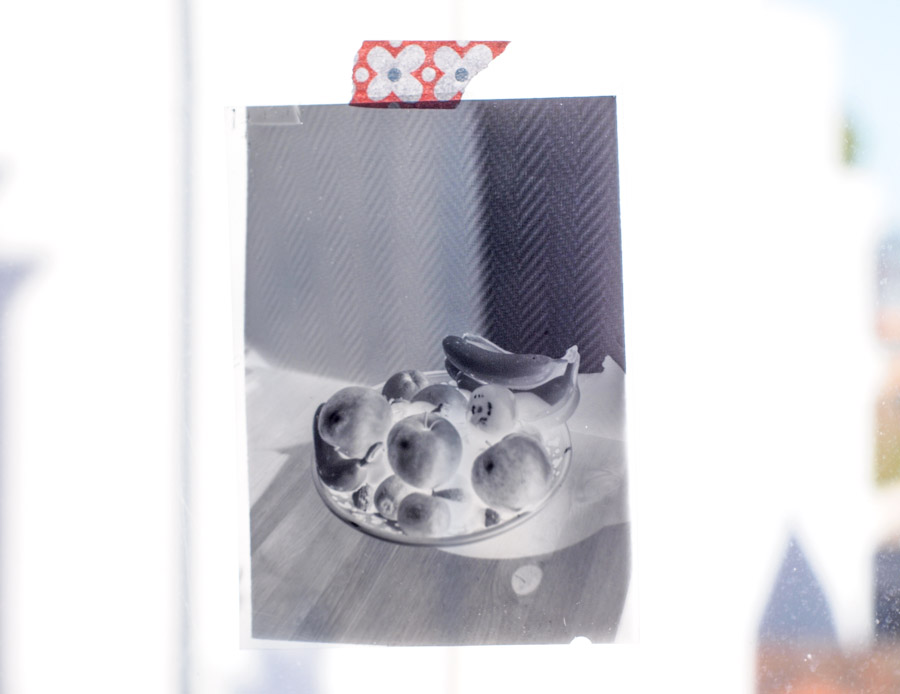
I am definitely surprised by the Rodenstock behavior! This picture was taken on Fomapan 100 at f8, this is a 100% crop of the 1200dpi negative scan:
Another on-the-go shot, with approximative framing, showing the scratches from the metal slide on the film. I still need to find a solution for this issue. But at least, the shutter works like a charm, there is no light leaks, and lens is sharp. I am more than happy with my new toy! Now, let’s get that project on track…

